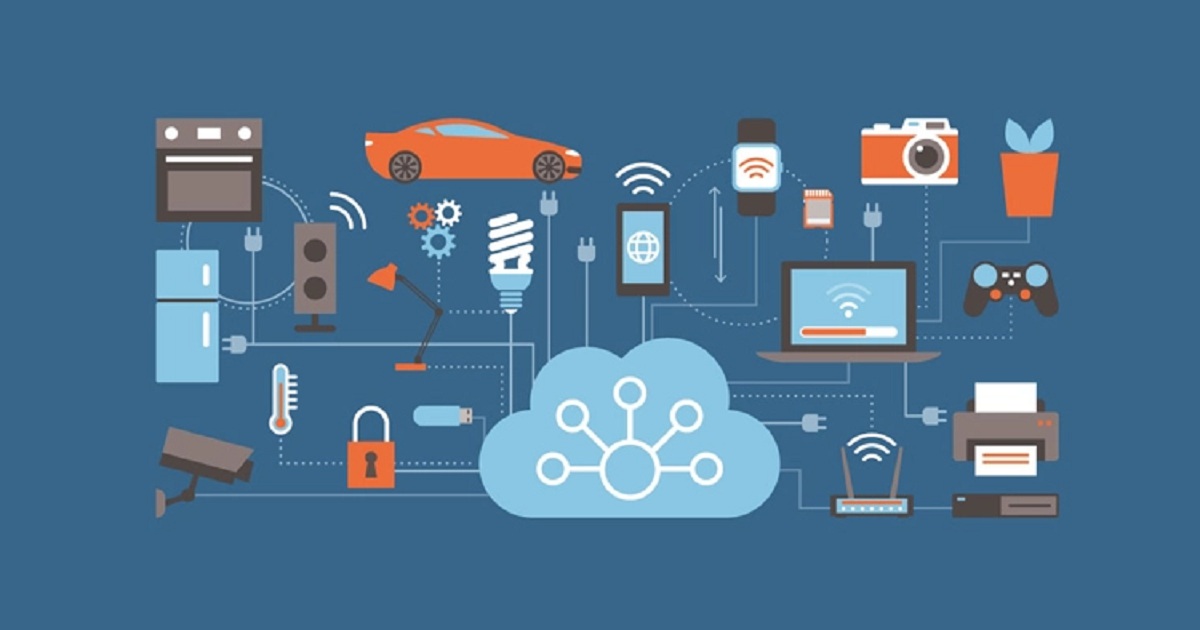
Industrial IoT, IoT Security
Article | July 12, 2023
Internet of Things, generally known as IoT, is a network of objects or things. Embedded sensors help connect and exchange data with other objects via the internet. IoT is often related to the concept of smart homes, including devices like home security systems, cameras, lighting, refrigerators, etc. With all this data being transmitted over the internet, it is easy for the data to be modified, deleted, or stolen, which can lead to an invasion, theft, etc.
IoT forensics plays a vital role in maintaining the integrity and security of the data being transmitted. Join us as we explore this fascinating web of devices and how you can get started in this vibrant field of forensics.
Read More

Industrial IoT, IoT Security
Article | July 11, 2023
Enhancing IoT security: Unveiling the significance of penetration testing in securing real-world IoT applications, identifying vulnerabilities, and mitigating risks for the protection of IoT data.
Contents
1. Introduction to IoT Application Security and Penetration Testing
1.1 Vulnerabilities of IoT application security
2. Fundamentals of IoT Penetration Testing
3. Considerations for IoT Penetration Testing
4. Methodologies and Approaches for IoT Penetration Testing
5. Takeaway
1. Introduction to IoT Application Security and Penetration Testing
Securing real-world IoT applications is paramount as the Internet of Things (IoT) permeates various aspects of any individuals lives. Penetration testing serves as a vital tool in identifying vulnerabilities and assessing the resilience of IoT systems against cyber threats. In this article, delve into the significance of penetration testing in securing IoT applications, exploring its role in identifying weaknesses, mitigating risks, and ensuring the integrity and confidentiality of IoT data.
1.1 Vulnerabilities of IoT application security
Expanded Attack Surface: The proliferation of IoT devices has dramatically expanded the attack surface, increasing the potential for security breach enterprise networks. With billions of interconnected devices, each presenting a potential vulnerability, the risk of unauthorized access, data breaches, and other security incidents is significantly heightened.
Risks: IoT devices often possess limited computational resources, making them susceptible to software and firmware vulnerabilities. Their resource-constrained nature can limit the implementation of robust security measures, leaving them exposed to potential attacks. Furthermore, a significant concern is the prevalence of default or weak credentials on these devices.
Diverse Threat Landscape: The threat landscape surrounding IoT devices is extensive and ever-evolving. It encompasses various attack vectors, including malware, botnets, DDoS attacks, physical tampering, and data privacy breaches. One notable example is the Mirai botnet, which compromised a vast number of IoT devices to launch large-scale DDoS attacks, leading to significant disruptions in internet services. In addition, IoT devices can serve as entry points for infiltrating larger networks and systems, allowing attackers to pivot and gain control over critical infrastructure.
Botnets: IoT devices can be infected with malware and become part of a botnet, which can be used for various malicious activities. Botnets are often utilized to launch distributed denial-of-service (DDoS) attacks, where a network of compromised devices overwhelms a target system with traffic, causing it to become inaccessible.
Ransomware: IoT devices are also vulnerable to ransomware attacks. Ransomware is malicious software that encrypts the data on a device and demands a ransom payment in exchange for the decryption key.
Data Breaches: IoT devices can be targeted to steal sensitive data, including personal identifiable information (PII) or financial data. Due to inadequate security measures, such as weak authentication or unencrypted data transmissions, attackers can exploit IoT devices as entry points to gain unauthorized access to networks and systems.
2. Fundamentals of IoT Penetration Testing
IoT penetration testing, also known as ethical hacking or security assessment, is a critical process for testing and identifying vulnerabilities and assessing the security posture of IoT devices, networks, and applications. It involves simulating real-world attacks to uncover weaknesses and provide insights for remediation.
IoT penetration testing involves identifying vulnerabilities, conducting targeted attacks, and evaluating the effectiveness of security controls in IoT systems. IoT pen-testing aims to proactively identify and address potential weaknesses that malicious actors could exploit. The methodology of IoT pen-testing typically follows a structured approach. It begins with attack surface mapping, which involves identifying all potential entry and exit points that an attacker could leverage within the IoT solution. This step is crucial for understanding the system's architecture and potential vulnerabilities. Pentesters spend considerable time gathering information, studying device documentation, analyzing communication protocols, and assessing the device's hardware and software components.
Once the attack surface is mapped, the following steps involve vulnerability identification and exploitation. This includes conducting security tests, exploiting vulnerabilities, and evaluating the system's resilience to attacks. The penetration testers simulate real-world attack scenarios to assess the device's ability to withstand threats. After exploitation, post-exploitation activities are performed to determine the extent of the compromise and evaluate the potential impact on the device and the overall IoT ecosystem. Finally, a detailed technical report summarizes the findings, vulnerabilities, and recommendations for improving the device's security.
3. Considerations for IoT Penetration Testing
Fuzzing and Protocol Reverse Engineering: Employ advanced techniques like fuzzing to identify vulnerabilities in communication protocols used by IoT devices. Fuzzing involves sending malformed or unexpected data to inputs and analyzing the system's response to uncover potential weaknesses.
Radio Frequency (RF) Analysis: Perform RF analysis to identify weaknesses in wireless communication between IoT devices. This includes analyzing RF signals, monitoring wireless communication protocols, and identifying potential vulnerabilities such as replay attacks or unauthorized signal interception.
Red Team Exercises: Conduct red team exercises to simulate real-world attack scenarios and evaluate the organization's detection and response capabilities. Red team exercises go beyond traditional penetration testing by emulating the actions and techniques of skilled attackers. This helps uncover any weaknesses in incident response, detection, and mitigation processes related to IoT security incidents.
Embedded System Analysis: Gain expertise in analyzing and reverse engineering embedded systems commonly found in IoT devices. This includes understanding microcontrollers, debugging interfaces, firmware extraction techniques, and analyzing the device's hardware architecture. Embedded system analysis helps identify low-level vulnerabilities and potential attack vectors.
Zero-Day Vulnerability Research: Engage in zero-day vulnerability research to identify previously unknown vulnerabilities in IoT devices and associated software. This requires advanced skills in vulnerability discovery, exploit development, and the ability to responsibly disclose vulnerabilities to vendors.
4. Methodologies and Approaches for IoT Penetration Testing
Mobile, Web and Cloud Application Testing
Mobile, web, and cloud application testing is integral to IoT penetration testing, focusing on assessing the security of applications that interact with IoT devices. This methodology involves various steps to evaluate the security of these applications across different platforms. For mobile applications, the methodology includes reviewing the binary code, conducting reverse engineering to understand the inner workings, and analyzing the file system structure. Sensitive information such as keys and certificates embedded within the mobile app are scrutinized for secure storage and handling. The assessment extends to examining the application's resistance to unauthorized modifications. In web applications, the testing covers common vulnerabilities like cross-site scripting (XSS), insecure direct object references (IDOR), and injection attacks. Application reversing techniques are employed to gain insights into the application's logic and potential vulnerabilities. Additionally, hardcoded API keys are identified and assessed for their security implications.
Firmware Penetration Testing
Firmware penetration testing is a crucial aspect of IoT security assessments, aiming to identify vulnerabilities within the firmware running on IoT devices. The methodology encompasses multiple steps to uncover weaknesses. The process begins with binary analysis, dissecting the firmware to understand its structure, functionality, and potential vulnerabilities. Reverse engineering techniques are applied to gain deeper insights into the firmware's inner workings, exposing potential weaknesses like hardcoded credentials or hidden functionality. The analysis extends to examining different file systems used in the firmware and evaluating their configurations and permissions. Sensitive keys, certificates, and cryptographic material embedded within the firmware are scrutinized for secure generation, storage, and utilization. Additionally, the resistance of the firmware to unauthorized modification is assessed, including integrity checks, secure boot mechanisms, and firmware update processes.
IoT Device Hardware Pentest
IoT device hardware penetration testing involves a systematic methodology to assess the security of IoT devices at the hardware level. This comprehensive approach aims to identify vulnerabilities and weaknesses that attackers could exploit. The methodology includes analyzing internal communication protocols like UART, I2C, and SPI to understand potential attack vectors. Open ports are examined to evaluate the security controls and risks associated with communication interfaces. The JTAG debugging interface is explored to gain low-level access and assess the device's resistance to unauthorized access. Extracting firmware from EEPROM or FLASH memory allows testers to analyze the code, configurations, and security controls. Physical tampering attempts are made to evaluate the effectiveness of the device's physical security measures.
5. Takeaway
Penetration testing is crucial in securing real-world IoT applications, enabling organizations to identify vulnerabilities and mitigate risks effectively. By conducting comprehensive and regular penetration tests, organizations can proactively identify and address security weaknesses, ensuring the integrity and confidentiality of IoT data. With the ever-growing threat landscape and increasing reliance on IoT technologies, penetration testing has become indispensable to safeguard IoT applications and protect against potential cyber-attacks.
Several key factors will shape the future of IoT penetration testing. First, the increasing complexity of IoT systems will require testing methodologies to adapt and assess intricate architectures, diverse protocols, and a wide range of devices. Second, there will be a greater emphasis on security by design, with penetration testing focusing on verifying secure coding practices, robust access controls, and secure communication protocols. Third, supply chain security will become crucial, necessitating penetration testing to assess the security measures implemented by vendors, third-party components, and firmware updates. Fourth, integrating IoT penetration testing with DevSecOps practices will ensure continuous monitoring and improvement of IoT system security. Lastly, as attackers become more sophisticated, future IoT penetration testing methodologies will need to keep pace with evolving IoT-specific attack techniques. By embracing these advancements, IoT penetration testing will play a vital role in ensuring the security and privacy of IoT deployments.
Read More

Enterprise Iot
Article | July 20, 2023
The evolution of internet-based market models has changed the way businesses operate. Present-day businesses know that data visualization in business intelligence is integral to competitive success. Therefore, businesses are now expanding their data and intelligence retrieval capacities. As a result, IoT (Internet of Things) data visualization is gaining popularity among industrialists and researchers across various disciplines.
In corporate finance, IoT-based efficient data visualization analyses data from multiple sources with the help of corporate analytics management tools and manages data quality for business intelligence to reduce the risk of leaks.
Impact of IoT Data Visualization on Corporate Finance BI
Data is everywhere— right from a customer's first visit to your company’s website until he signs out, all the behavioral patterns and data are tracked. All this data becomes useless unless it is utilized for a particular purpose.
Analyzing this data to predict future trends is one of the significant benefits of smart data visualization tools and technologies. It helps to slice and dice the data gained from different sources of different complexity levels to the minute granular level. Business intelligence utilizes these insights and the existing database to run risk analysis.
It gives an overview of your financial performance and the risks and exposures it faces. And if you switch the KPIs at the center of any dashboard, your entire team can instantly access the most important and relevant data.
IoT data visualization can measure big data on customers more efficiently, allowing organizations to add value to their customers. Customized tools will analyze your customers’ data and produce reports according to specific customer needs to help you get a deeper insight. Corporations can also utilize this data to better understand their competitors’ benchmarks.
Customizable IoT Data to Store Millions of Data Points in One Place
IoT collects millions of data from various complex sources. The data visualization dashboard contains multiple widgets that convert this data into various forms, such as line graphs, geographical maps, bar charts, pie charts, gauges, heat maps, etc.
This information, transmitted into multiple visualizations, helps organizations to unlock every piece of data into a valuable asset.
The Benefits of Using IoT Data Visualization
Businesses can collect, analyze and monitor a variety of data using IoT, such as internet usage data, video surveillance data, mobile app usage, and social media. It helps businesses to design products and provide personalized value-added services to drive better consumer engagement. Here are some key benefits IoT data visualization offers:
Unlock multiple insights across various verticals
Addressing important financial concerns proactively
Combination of multiple data sources into a single insightful dashboard
Multi-layered visual data.
Combines new data with the existing data to analyze new business opportunities.
Better performance on IoT data flow.
Analyze multiple data correlations in real-time
Improved Collaboration
Well-coordinated and efficient performance.
Cost reduction
Accurate data interpretation
Mitigate risk factor
Better decision making
Conclusion
Hands down, IoT data visualization intelligence in a company’s business operations will lead to better decision-making. But, before you choose an IoT data visualization tool for your business, you should know what kind of data you need to analyze and if you need any additional historical data. Because IoT services offer data visualization tools and techniques to analyze and monitor the data accordingly to predict future trends. So, it’s important to identify the goals before selecting a tool for your organization.
Read More

IoT Security
Article | June 27, 2023
Explore the world of readings on IoT security, to address complex cyber security challenges and privacy issues. It caters to a wide range of readers including industrialists, students & enthusiasts.
The Internet of Things (IoT) has revolutionized industries, enabling innovative applications and improved efficiency. However, along with the numerous benefits of the IoT comes the pressing need for robust security measures. As IoT devices become more prevalent and interconnected, their risks and vulnerabilities also increase. The experts in the domain must stay updated with the latest security practices and techniques to ensure IoT systems' integrity, confidentiality, and availability. A wide range of books has been explicitly tailored address these security concerns.
1. Analytics for the Internet of Things (IoT)
Author: Andrew Minteer
Analytics for the Internet of Things (IoT): Intelligent analytics for your intelligent devices provides a comprehensive guide for businesses aiming to make informed decisions and gain greater control over their IoT infrastructure. Written by an expert in the field, this book equips readers with the essential knowledge and techniques to solve the unique challenges associated with IoT and extract valuable insights from vast amounts of data. The book begins by tackling the complex task of extracting value from large volumes of often complex IoT data, empowering readers to make data-driven decisions. Strategies to address data quality concerns are discussed, ensuring that readers are equipped to handle the inherent challenges. It offers readers approaches to optimize business value and bring down costs. Scaling both data storage and analytics is a critical consideration in IoT deployments, and the book provides practical insights into handling scale effectively. The book covers a range of topics, including transmission protocols, data flow, value extraction, geospatial analytics, machine learning, and optimizing business value.
2. Industrial Internet of Things (IIoT)
Editors: R. Anandan, Suseendran Gopalakrishnan, Souvik Pal, Noor Zaman
One of the essential IoT security books, Industrial Internet of Things (IIoT): Intelligent Analytics for Predictive Maintenance comprehensively explores how the industrial internet is transforming through increased network agility and the ability to deploy, automate, integrate artificial intelligence, orchestrate, and secure diverse use cases at hyperscale. The adoption of industrial automation on a large scale is revolutionizing business processes, with the market for industrial robots projected to reach $73.5 billion by 2023. The book highlights how IoT industrial automation provides numerous advantages, including enhanced efficiency, high accuracy, cost-effectiveness among others. This book presents real-world case studies in IIoT, robotic and intelligent systems, and web-based applications. The content is tailored to appeal to a broad audience, including working professionals, educators, and researchers in various technical disciplines. The book provides industry leaders with valuable insights by proposing business models that revitalize the workforce.
3. IoT and OT Security Handbook
Authors: Smita Jain, Vasantha Lakshmi, Foreword: Dr Rohini Srivathsa
IoT and OT Security Handbook: Assess risks, manage vulnerabilities, and monitor threats with Microsoft Defender for IoT is a comprehensive guide that equips industrial security, IoT security, and IT security professionals with the knowledge and tools to effectively address cybersecurity challenges in the rapidly evolving world of IoT and OT. In the era of the Fourth Industrial Revolution, where digital transformation and connected industries dominate, the book sheds light on the pressing security concerns that must be addressed to ensure data protection and operational resilience. Through a deep dive into the Purdue model of reference architecture, readers gain a solid understanding of common cyber-attacks prevalent in IoT and OT environments. The centerpiece of the book revolves around Microsoft Defender for IoT, a powerful security solution specifically designed to safeguard IoT and OT ecosystems. Furthermore, the concept of zero trust, which is crucial for establishing a robust security foundation, is thoroughly explored with practical insights on its implementation in the context of IoT devices.
4. Practical Internet of Things Security
Author: Brian Russell, Drew Van Duren
Practical Internet of Things Security: Design a security framework for an Internet connected ecosystem is an indispensable guide that navigates the complex realm of securely building and deploying systems in our IoT-connected world. The book primarily targets IT security professionals, security engineers, and individuals responsible for ensuring the security of their organization's data in the IoT landscape. However, it also serves as a valuable resource for business analysts and managers seeking to understand and address the security challenges associated with IoT deployments. Readers will gain a wealth of knowledge and practical skills, including breaking down cross-industry barriers, building a rock-solid security program, applying systems security engineering and privacy-by-design principles, and harnessing cloud-based systems. It delves into the unique security challenges associated with IoT and provides practical guidelines for architecting and deploying a secure IoT ecosystem within an enterprise.
5. IoT: Security and Privacy Paradigm (Internet of Everything (IoE))
Editors: Souvik Pal, Vicente García Díaz, Dac-Nhuong Le
IoT: Security and Privacy Paradigm is a comprehensive and authoritative resource that explores the evolution of security and privacy issues within the realm of the IoT. This book serves as a single reference point for students, researchers, and practitioners seeking to better understand the IoT security platforms and privacy landscape. The book adopts security engineering and privacy-by-design principles to design and implement robust cyber-security solutions within IoT ecosystems. It takes readers on a journey, starting with exploring security issues in IoT-enabled technologies and their practical applications. The book provides practical guidance on tackling security challenges and constructing a secure infrastructure for IoT devices. The book thoroughly discusses security challenges and solutions in areas such as RFID, WSNs, and IoT. The primary audience for this book includes specialists, researchers, graduate students, designers, experts, and engineers focused on security-related issues and research.
6. IoT Security Issues
Author: Alasdair Gilchrist
IoT Security Issues addresses the rapid proliferation of internet-connected devices, where security often takes a backseat to product development. This book delves into the inherent vulnerabilities and IoT security challenges, offering insights on how to address and mitigate these issues. By examining the root causes of these problems and emphasizing the importance of programming and security best practices, the author presents practical solutions to combat the lax security processes prevalent in the IoT landscape. This book caters to a wide range of readers, including programmers who have yet to focus on the IoT, security professionals, and individuals with a keen interest in hacking and making. While a basic programming background would be beneficial for certain chapters later in the book, the core content is explained in a manner that is approachable for readers from various backgrounds.
7. Security and Privacy Issues in IoT Devices and Sensor Networks
Editors: Sudhir Kumar Sharma, Bharat Bhushan, Narayan C. Debnath
This book, of all the IoT security books, delves into the critical aspects of security breaches in IoT and sensor networks, offering a comprehensive exploration of potential solutions. The book takes a two-fold approach, thoroughly examining the fundamentals and theoretical foundations of sensor networks and IoT security. It then explores the practical IoT security solutions that can be implemented to enhance the security of these elements, providing illuminating case studies to reinforce understanding. The book is an invaluable resource for industry professionals working with wireless sensor networks (WSN) and IoT systems, enabling them to elevate the security of these interconnected systems. Additionally, researchers, material developers, and technology specialists grappling with the intricate nuances of data privacy and security enhancement will find the book's comprehensive information highly beneficial.
Final thoughts
IoT security for professionals involves implementing secure communication protocols, strong authentication, device management, data encryption, access control, and regular security audits. It is crucial to stay updated, maintain a security-aware culture, and prioritize the ongoing monitoring and adaptation of security measures to address emerging threats.
The above listed books delve into various aspects of IoT security, providing insights, strategies, and practical solutions to mitigate risks and protect IoT ecosystems. This article highlights some essential IoT security books that are indispensable resources for IoT professionals striving to enhance the security posture of their organizations. They also provide real world case studies, best practices and strategies to minimize risks.
Read More